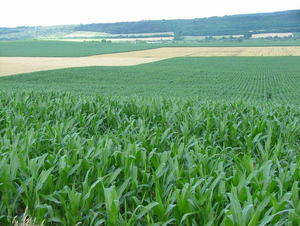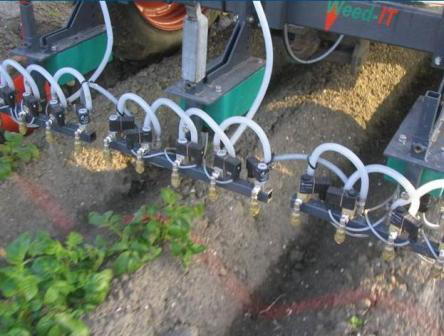Europe
April 28, 2011
 By how much could we expect to cut pesticide inputs in maize? It’s a question which has been tackled by ENDURE’s team examining the potential use of innovative technologies and the answer, in short, is by a huge amount: 100% in the case of seed treatments, up to 85% in the case of insecticides and 90% in the case of herbicides.
By how much could we expect to cut pesticide inputs in maize? It’s a question which has been tackled by ENDURE’s team examining the potential use of innovative technologies and the answer, in short, is by a huge amount: 100% in the case of seed treatments, up to 85% in the case of insecticides and 90% in the case of herbicides.
Of course, these reductions are not going to be possible in the near future, but the team hope its conceptual innovative crop protection system (ICPS) for maize will serve as an inspiration for creating systems which are better for the environment, produce healthy products with no residues and put European agriculture in a stronger competitive position.
You can read about this work in the ENDURE Deliverable DR2.21 A ‘state of the art’ conceptual innovative crop protection system (ICPS) for maize , which is available below. The same team has also produced a paper based on this work, Combining novel monitoring tools and precision application technologies for integrated high-tech crop protection in the future (a discussion document) for the March 2011 issue of Pest Management Science.
While the ICPS will require substantial research and development before it can be implemented, the individual measures it employs, such as monitoring techniques, software tools and precision spray techniques are already available, say the researchers.
The ICPS follows a clear set of steps centred around monitoring before and during the growth period at both the macro (field) scale and micro (plant) scale. Crucially, this monitoring is conducted using techniques which can detect pests and diseases before the symptoms are visible.

Precision spraying conducted at Wageningen University. Copyright: WUR
The data collected from monitoring is then analysed using what the researchers call a ‘decision engine’. Whereas classical Decision Support Systems offer recommendations on control measures, decision engines are capable of providing advice on preventing or reducing attacks of weeds, pests and diseases ahead of crop establishment.
1. “A system whereby diseases, pests and weeds can be identified at a much earlier stage than is now the case would make it possible to limit the amount of chemicals to be applied,” note the researchers. “Earlier identification could also allow the grower to use biological control or take other localised measures.”
2. The system seeks to maximise the use of alternative control measures at all stages. These include, for example, crop rotation, early or very late planting, ploughing and biological controls. Some biological controls are already being used for the control of maize pests such as corn borers, and researchers note the potential of entomopathogenic fungi, viruses and Bacillus thuringiensis strains to reduce chemical insecticides in the future. Other options include mating disruption and the use of semiochemical-based insecticide baits.
Where the decision engine decides chemical treatment is necessary, it is conducted using precision application technology. Researchers note that better positioning of insecticide in the plant canopy, ensuring it is applied in the positions where the insects are mostly found, can improve efficacy and reduce application rates. For example, at the soil surface underneath high maize canopies, precision spraying can reduce insecticide inputs by 50%.
The team has identified the research required to complete the model for maize. Individual elements of the system are already available, they say, but will require improvement before they can be linked together in an innovative crop protection system, and more knowledge is required about damage thresholds, dose-response relations, biology, ecology and population dynamics.
To read these articles in full
Title
ENDURE Deliverable DR2.21 A ‘state of the art’ conceptual innovative crop protection system (ICPS) for maize
Zijlstra, C., Lund, I., Justesen, A. F., Nicolaisen, M., Jensen, P. K., Bianciotto, V., Posta, K., Balestrini, R., Przetakiewicz, A., Czembor, E. and de Zande, J. v. (2011), Combining novel monitoring tools and precision application technologies for integrated high-tech crop protection in the future (a discussion document). Pest Management Science, 67: n/a. doi: 10.1002/ps.2134
http://onlinelibrary.wiley.com/doi/10.1002/ps.2134/abstract
ENDURE_DR2.21 [pdf - 385.86 kB]
For more information on innovative technologies:
For information and leaflets from ENDURE’s maize system case study:
Source, and more ENDURE publications on maize